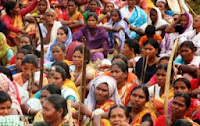[MLE] 10th Issue of Multilingual Education E-Newsletter

Dear MultiLingual Education friends, UNESCO Bangkok just published the 10th Issue of Multilingual Education E-Newsletter . It has MLE related news-items from all over Asia , a list of resources related to education and a overview of relevant events. The most interesting event is probably the 4th International Conference on Language and Education: Multilingual Education for All in Asia and the Pacific - Policies, Practices and Processes , Thailand; 6-8 November 2013. There is also a link to the MLE Mapping Data as maintained by the Asia Multilingual Education Working Group with a request to contribute to it.

